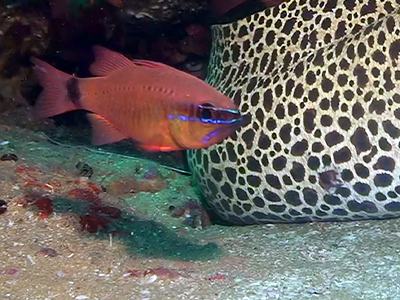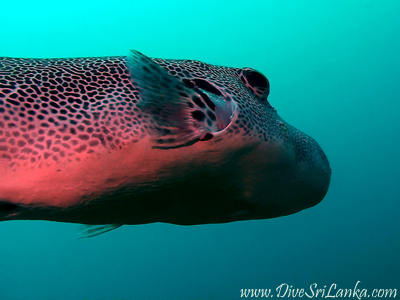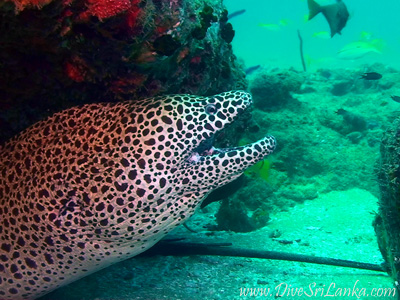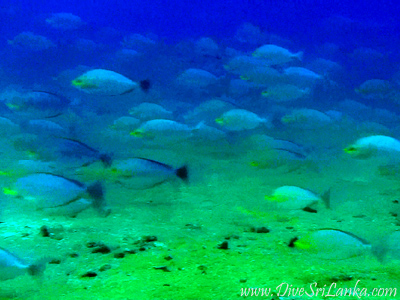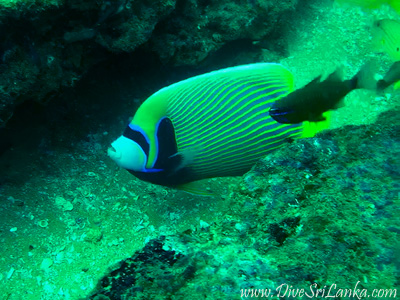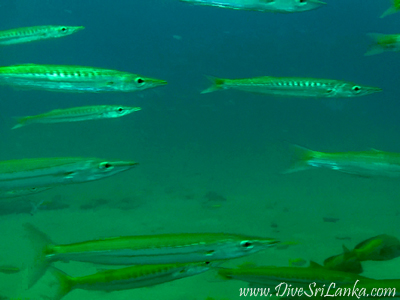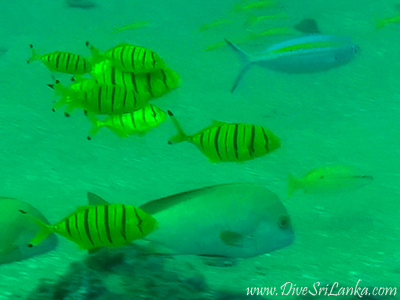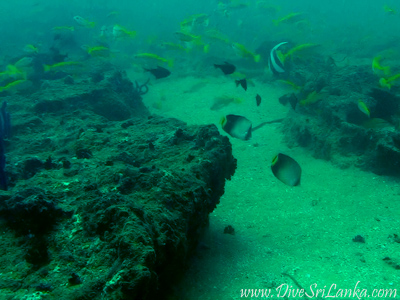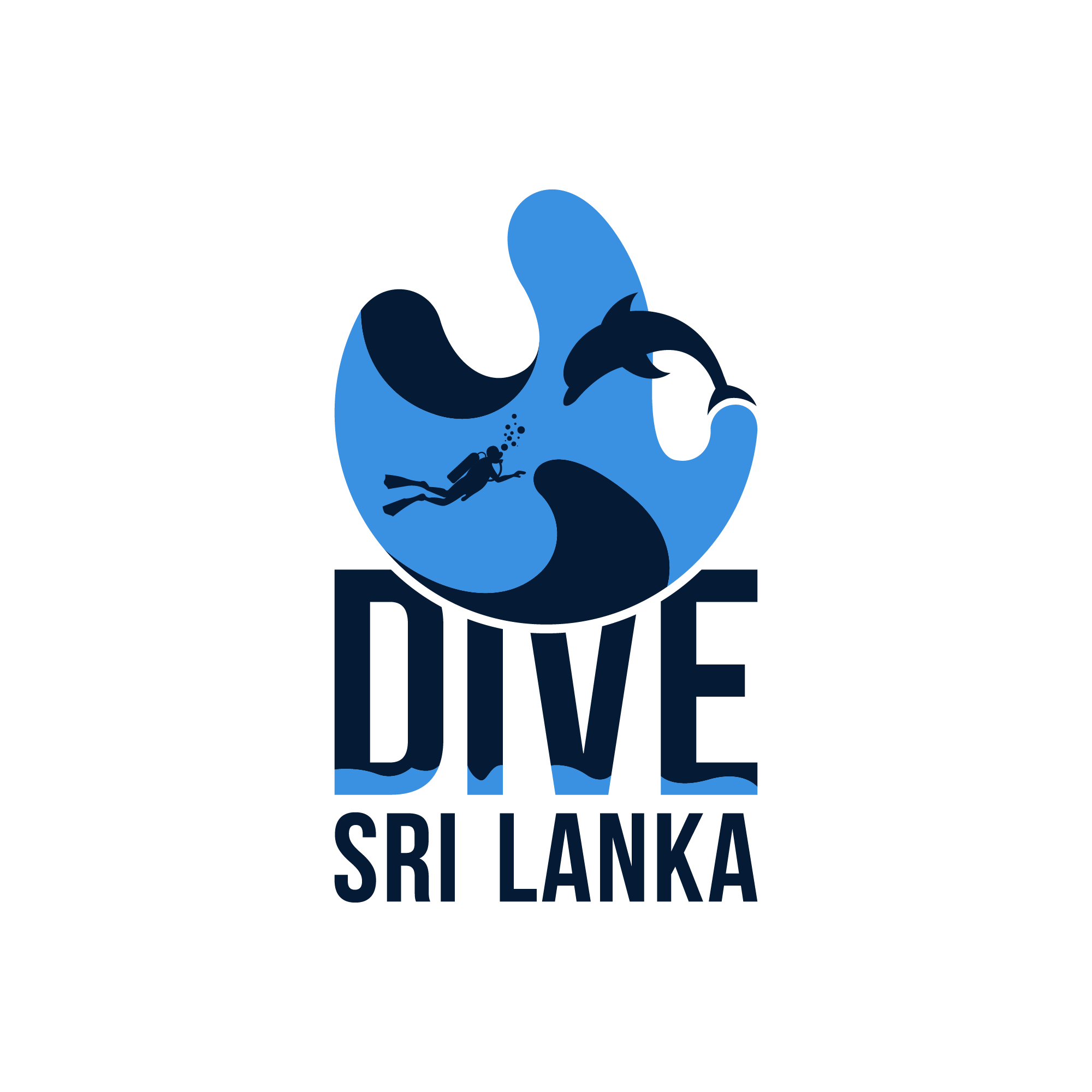

At the mouth of the Lagoon on the island's western coast, Western Province has the popular tourist resort of Negombo. The distance between it and Bandaranaike International Airport is 6.2 mi. Divers of all levels of expertise flock to Negombo to enjoy the reefs, rocky obstacles, wrecks, and caves the area offers, especially the Derana Gala Diving Site. Both shallow and deep regions have a variety of marine organisms. The most well-liked dive locations are Diyamba Gala, Lobster Reef, Ahas Yatra Gala, with its sunk British Fighter Aircraft, Barracuda Point, and Derana Gala, the top diving spots near Negombo.
It is one of Negombo's most incredible dive sites, situated between the Second and Third Reef, and is one of the comparatively deeper sites. Sometimes the fish movement here is too much!
Derana Gala is a lengthy dive location, a nearly narrow piece of rock resting on the sand. The typical visibility is 15 meters most of the time, and the bustling fish life can occasionally even reduce visibility.
Large shoals of Rabbitfish and Surgeons surround the rocky reef while reef fish scamper merrily among the rocks. Moray eels, Sting Rays, Small Groupers, Cardinalfish, Nudibranchs, Lionfish, Pufferfish, and Boxfish, can all lurk within the rocky reef.
The typical water temperature ranges from 25C (77F) to 30C (86F) and is exceptionally high compared to the other locations surrounding the area. The air temperature ranges between 25C and 28C with a relative humidity greater than 75%. This region's regular rainy season, which runs from May to September, coincides with the monsoon season.
With their profusion of coral formations and tiny exotic species like Sweetlips, Parrotfish, and porcupine fish, shallow areas at Derana Gala are excellent for macro photography. The various rocky reefs exceptionally found in this area, each with a unique ecological community, are like a home to the fishes in Derana Gala.
During high tides, plants, invertebrates, and fish live in the rocky intertidal. Due to roaring waves, daily low tides that strand marine species out of the water, and competition for space, life at the rocky intertidal is challenging. Further from the shore, deeper and more challenging dives could provide a haven for predators, including cardinalfish, lionfish, groupers, bullseyes, scorpionfish, stingrays, cuttlefish, and many more.
The rabbitfish found in Derana Gala is a fascinating fish type. The huge shoal of Rabbitfish circling on the reef continuously goes here and there. It's like a blue cascade when they are swimming upon the reefs.
About 25 species of fish that make up the family Siganidae are found in shallow tropical marine waters of Derana Gala and the surrounding area. They graze on plants and algae in the areas close to shore or surrounding reefs. Most rabbitfish are olive or brown, and several fins are covered in prickly, lethal spines. Rarely do they grow longer than 30 cm.
Angelfish gives a unique and marvellous charisma to the Derana Gala diving site. This species can grow to a maximum total length of 6 inches and a maximum height of 8 inches. They display a laterally compressed body structure, indicating that they are pretty slender, like most cichlids.
These fish are available in many hues, including plain silver, coloured stripes, and black-and-silver marble. Angelfish tend to coexist peacefully as a species, although they may not get along with tiny species.
Dark pink with black dots is a beautiful combination. But who got this combination? It is Porcupinefish. It is a lovely, colossal fish found on the Deranagala diving site. The spiky, shallow-water fishes in the family Diodontidae, including the Diodon hystrix species, are known as porcupine fish. They are related to puffers and, like them, can enlarge their bodies in response to stress.
They deceive prying eyes as small but instead have broad bodies, huge eyes, beak-like teeth, and spine-set skin. In other species, like the burrfishes of the Chilomycterus, these spines are short and permanently erect. In contrast, except when the fish is inflated, the spines of the others, including those of the genus Diodon, lie against the body.
Cardinalfish is also an excellent fish variety found on the Derana Gala diving site. The Actinopterygii class of fish includes the cardinalfish, commonly referred to as the Banggai Cardinalfish. There are two anal spines, 13 anal soft rays, and 14 dorsal soft rays overall (Capuli and Valdestamon).
This species stands out more due to its extensively branched caudal fin and tasselled first dorsal fin. Additionally, the anal fin rays and second dorsal fin rays are also lengthened.
It has three black bars running down the centre of its head and body, black edges running down the anterior margins of the second dorsal and anal fins, black edges running along the upper and lower borders of the caudal fin, and black pelvic fins with white dots. Its skin colour pattern is quite distinct and easy to see.
The following beautiful and hottest one is Golden Trevally or pilot fish. Most species' habitat is inshore waters, which live on reef and sand substrates. The golden trevally can vary in colour from a bright yellow with black bars as a juvenile to a golden-silvery shade as an adult, but its thick, rubbery lips are set apart from its relatives.
So at final, these fantastic fish ranges can be seen at the Derena Gala diving site.
So why are you waiting for? Visit Sri Lanka, visit the Derana Gala diving site, and feel how nature nurtures us!!
